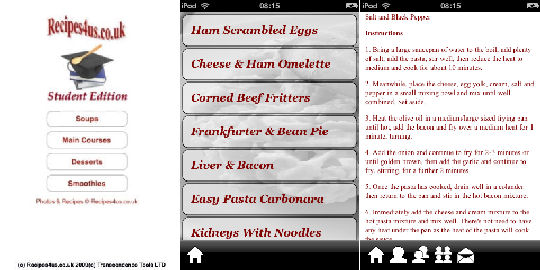|
Your online resource for all things culinary |
|
|||||||||
|
||||||||||
|
||||||||||
| � | ||||||||||
|
||||||||||
|
� Be aware that bacteria multiplies more rapidly at room temperature so wrap and store foods which should be chilled as soon as possible. � � Once opened, never refrigerate tinned food in the tin. Transfer it to a small container or bowl and cover with clingfilm. � Food Preparation and Cooking for Students�
� Thaw meat and fish thoroughly before cooking. � Don�t refreeze raw foods. The only exception is when you've prepared a dish from defrosted raw ingredients which have subsequently been thoroughly cooked. � � Once pre-cooked dishes have been thawed, don�t refreeze them - even if you've re-heated them.
� � Wash vegetables in cold running water before using, including "ready washed" salads and vegetables as these have often been rinsed in water which contains chlorine. Remember, most veggies don't pick themselves - people have handled them. � � Wash all meat, fish and poultry in cold running water before using.� Not only have they been handled but the storage and packaging can also have an affect on them. �
� Only use kitchen paper to dry foods after washing. Tea towels are more likely
to carry bacteria which can be spread to the food. � When preparing raw foods, make sure the chopping board or work surface is thoroughly washed BETWEEN preparations, especially where meat, fish and poultry is concerned. A good habit to get into is to prepare vegetables or fruit first, then items like cheese if using, and lastly fish, poultry or meat. � � If you have to cut directly on the work surface, make sure it is wiped down with clean water to get rid of detergent residue. We recommend always using a chopping board.
� � No matter what you may have heard from noncey chefs, it is not wise to eat "pink" chicken or pork.� Be safe - cook both thoroughly.
|
||||||||||
�
|
||||||||||
| � | ||||||||||


